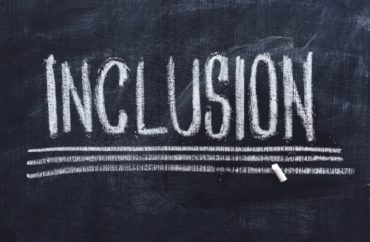
Only one non-binary character in last year’s top 100 films
A new study out of USC’s (appropriately named) Annenberg Inclusion Initiative concludes that Hollywood still has a lot of work to do when it comes to inclusion.
The study looked at the demographics of speaking roles in films from 2007 to 2022 (“with a particular focus on the most popular films of last year”), as well as those of “behind-the-scenes” jobs associated with the movie industry, NPR reports.
Annenberg Inclusion Initiative founder Stacy Smith (pictured), who is “the foremost disrupter of inequality in the entertainment industry” according to her faculty bio, said big movie studios such as Paramount, Universal and Disney “need to reimagine the way that they’re doing business to represent the world around them, and that’s currently not the status quo.”
 Smith said studios need to “stop being performative” in their inclusion efforts: “They need to work with experts and work aggressively to change hiring practices, auditioning practices, and who their casting directors are.”
Smith said studios need to “stop being performative” in their inclusion efforts: “They need to work with experts and work aggressively to change hiring practices, auditioning practices, and who their casting directors are.”
The study found that a mere 15 percent of last year’s top 100 films “featured a gender-balanced cast,” and just one featured non-binary character.
MORE: Academics hijacked a famous 100-greatest-movies list
In addition:
There were fewer actors from an underrepresented racial or ethnic group in a major role in 2022 than in 2021. The report showed only around 2% of speaking characters in the top films of 2022 were LGBTQ+ — “a percentage that has not changed meaningfully since 2014,” USC’s report summary noted. The percentage of characters with disabilities was even smaller.
Behind the scenes, the report paints an equally pessimistic picture. “A total of 88 individual women have directed a top-grossing movie over the last 16 years, compared to 833 men,” the report summary stated. There has been no major uptick in the percentage of women-identifying screenwriters (16%) and producers (27%) over the past couple of years. In terms of the ethnicity and race of movie directors, the field is still heavily dominated by white men. Women of color comprised less than 2% of directors across all 1,600 films.
But not everything is as doom and gloom as Smith’s remarks may indicate. There were 19 films featuring “underrepresented female-identified leads” last year, up from just one in 2007. In addition, Asians got a lot more screen time, and there was a “big uptick in the number of female movie soundtrack composers.
And in a win for proportionality, the AP reports 2022 witnessed “Black, Hispanic, Asian and other non-white minorities” in 38.3% of film speaking roles, almost equal to their general population percentage (41).
Still, Smith is cynical.
“These trends suggest that any improvement for people from underrepresented racial/ethnic groups is limited,” she said. “[O]ur data on invisibility suggests that there is still much more to be done to ensure that the diversity that exists in reality is portrayed on screen.
Smith added that “Hollywood has a long road ahead to address the exclusion still happening in the industry alongside the concerns actors and writers are bringing to the forefront.”
MORE: The show must NOT go on: Cancel culture shuts down movies, theater and music on campus
IMAGES: igorstevanovic/Shutterstock.com; USC





Please join the conversation about our stories on Facebook, Twitter, Instagram, Reddit, MeWe, Rumble, Gab, Minds and Gettr.